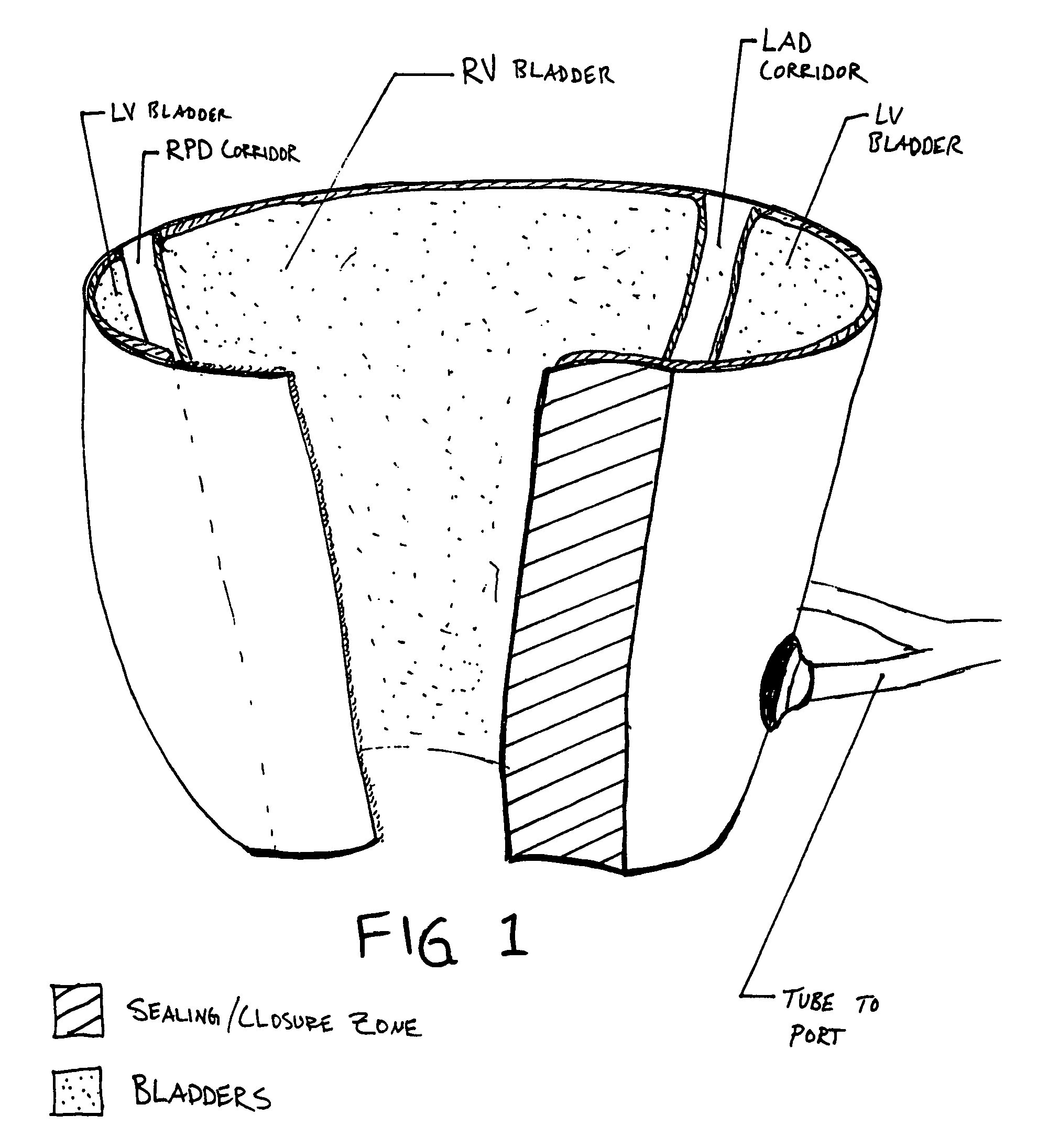Progressive biventricular diastolic support device
a support device and diastolic technology, applied in the field of progressive treatment, can solve the problems of increasing the risk of ischemically developed fibrosis, reducing any blood flow, etc., and achieve the effects of reducing end-diastolic pressure, increasing cardiac output, and reducing the contractility of cardiac muscl
- Summary
- Abstract
- Description
- Claims
- Application Information
AI Technical Summary
Benefits of technology
Problems solved by technology
Method used
Image
Examples
Embodiment Construction
[0050]In one specific embodiment of the invention, shown in FIGS. 1-12, a left-side thoracotomy approach is followed by opening the pericardial sac to expose the heart. The outward fabric enclosure, modeled from the “human fit” trials is made of a non-elastic material that is slipped over the heart with the apex inserted first. The enclosure has the internal right and left bladders already attached to the side of the enclosure facing the epicardium. Care is taken to note that the seams associated with the binding of the individual bladders maintain a region that protects the epicardial descending coronary arteries from being impinged by the bladders. With the enclosure properly aligned, the enclosure is closed with one or more fasteners, such as hook-and-loop fasteners, in the form of straps or strips. Once the surgeon is satisfied with the enclosure fit including registration of the biventricular canal sutures may be run from the enclosure to the pericardium for fixation. Each blad...
PUM
 Login to View More
Login to View More Abstract
Description
Claims
Application Information
 Login to View More
Login to View More - R&D
- Intellectual Property
- Life Sciences
- Materials
- Tech Scout
- Unparalleled Data Quality
- Higher Quality Content
- 60% Fewer Hallucinations
Browse by: Latest US Patents, China's latest patents, Technical Efficacy Thesaurus, Application Domain, Technology Topic, Popular Technical Reports.
© 2025 PatSnap. All rights reserved.Legal|Privacy policy|Modern Slavery Act Transparency Statement|Sitemap|About US| Contact US: help@patsnap.com



